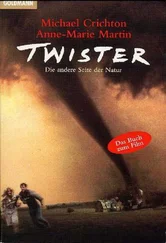1 ...7 8 9 11 12 13 ...17 While the astronauts slept, commands for a prolonged thirty-nine-minute avoidance maneuver were issued from the trajectory operations manager (TOPO) console. The ISS’s four 220-pound control moment gyroscopes shifted rhythm immediately. Made of stainless steel, the circular flywheels generated the torque that leaned the ISS forward at a constant four degrees—keeping the station’s floor pointed at Earth’s surface and maintaining an Earth-centered, Earth-fixed (ECEF) diving orbit. The electrically powered gyros began to modify the station attitude in preparation for the maneuver.
Once situated, the next step would normally have called for an extended thruster burn from the robotic Progress cargo module attached to the Pirs docking compartment. However, due to the substantial translation needed, TOPO decided to authorize use of an experimental solar electric propulsion (SEP) device.
Electrical power gathered by onboard solar arrays was routed to a cluster of highly efficient electrostatic Hall thrusters, conserving precious supplies of traditional chemical propellant. On activation, the thrusters pulsed in perfect rhythm, ejecting a flickering plume of plasma exhaust. The resulting force pushed the ISS upward directly through its center of gravity, while also translating the bulky structure to a southward trajectory.
A typical reboost maneuver would change only the altitude of the ISS, but in this case the azimuth was also modified from fifty-four degrees to zero, resulting in a highly unusual equatorial orbit. The maneuver was completed within the allotted time, and a summary press release was issued, citing a routine debris avoidance maneuver and praising the success of the SEP device.
General Stern had managed to coordinate the entire effort without ever informing NASA, RNCA, or JAXA of the true underlying emergency.
And yet Sophie Kline knew right away the trajectory change had something to do with Andromeda. This was not surprising, since Kline was one of the very few people intimately aware of the true purpose of the International Space Station.
The full, unclassified transcript of her initial exchange is below:
ISS-KLINE
Houston this is Station, come in. Requesting status update. What … [unintelligible] Why am I seeing Brazil moving east west?
HOU-CAPCOM
Just, uh, had an EDAM, Station. Orbital debris. Good news, though. The SEP thrusters worked perfectly.
ISS-KLINE
That is good news. But, this is so far … listen, I’m initiating a special query request. Have you been contacted by Peterson Air Force Base?
[static—four seconds]
HOU-CAPCOM
I’m sorry, Station, we’ve got no record—
[transmission lost]
[static—eleven seconds]
PAFB-STERN
Kline. This is Stern. We are on a private channel. I’ve got an update for your to-do list.
ISS-KLINE
Go ahead.
PAFB-STERN
Your scientific mission is suspended as of now. Until further notice, knowledge of your reassignment is to be restricted from all space agencies, including NASA. Do you understand?
[short pause]
ISS-KLINE
Yes sir, General Stern.
PAFB-STERN
You’ve been placed in an equatorial orbit that passes over the debris field of the fallen Tiangong-1 space station. We … It, it’s been hypothesized the station may have triggered a ground contamination upon reentry.
ISS-KLINE
In the jungle ?
PAFB-STERN
Something is down there. Some kind of anomaly. It’s already killed people, and it’s spreading.
ISS-KLINE
I see.
PAFB-STERN
Project Wildfire has been reactivated, Dr. Kline. Your role is orbital lab support. The other ISS crew members will monitor for any remnants of the Tiangong-1 that are still atmospheric, under the guise of an emergency scientific mission.
ISS-KLINE
Understood.
PAFB-STERN
You will also monitor our field team from above. Eyes and ears. Got it?
ISS-KLINE
A field team? You’re not sending people into that jungle? General, please, at least wait until I can—
PAFB-STERN
No time, Doctor. Report to the Wildfire Mark IV laboratory module. It’s already begun.
THE EXISTENCE OF the executive order can seem contradictory to democratic government. In times of emergency or in peace, the president of the United States may simply dictate national policy and have it executed in an instant—without review.
This act has been previously described as: “Stroke of the pen, law of the land.”
The first executive order was used by George Washington on June 8, 1789, to instruct the heads of all federal departments to create a State of the Union for the newborn country. In 1863, Abraham Lincoln issued one that became known as the Emancipation Proclamation—ultimately freeing three million slaves. And nearly a century later, Franklin Delano Roosevelt issued a 550-word executive order that called for the United States government to incarcerate over a hundred and twenty thousand of its own citizens and residents of Japanese descent in concentration camps constructed across the Western United States.
It is a great and terrible power to wield, and one that can lead to historic repercussions—if it is ever made public, that is.
The classified executive order NSAM 362-S (known as a “National Security Action Memorandum” at the time) was issued three weeks after the first Andromeda incident and the subsequent back-to-back losses of the American Andros V manned spacecraft and the Russian Zond 19 mission. Within government circles, the order was widely regarded as symbolic. Off the record, many politicians considered the task to be on par with the Pharaohs’ orders to erect the great pyramids of Giza.
A portion of the order read:
TOP SECRET/FORMERLY RESTRICTED DATA ATTACHMENT NATIONAL SECURITY ACTION MEMORANDUM NO. 362-S
April 10, 1967
| THE PRESIDENT |
Ordering the Creation of a Microgravity Laboratory Module to be Placed in a Space Station in Permanent Orbit. |
By the authority vested in me as President by the Constitution and the laws of the United States of America, I hereby determine that it is vital for national security and the safety of our species itself to study the extra-terrestrial microparticle known as the Andromeda Strain in its natural microgravity environment, i.e., a state-of-the-art laboratory placed in low Earth orbit.
The estimated cost of the endeavor in 1967 was $50 billion, twice the cost of the Apollo program and (adjusting for inflation) approximately the same as the entire national military budget of 2018. In the upper echelons of government executives who were authorized to read the order, the president’s demand was met with derision and disbelief.
But the practical need to study the particle remained.
By the fall of 1967, the tiny town of Piedmont, Arizona, had been sterilized from top to bottom and the forty-eight bodies (including two US Army personnel) cremated. Every structure and vehicle was deconstructed and placed in hangar-like storage facilities built in the desert by the Army Corp of Engineers for this purpose. The task was accomplished carefully and with no casualties, thanks to the findings of the Wildfire team. The effect was so sudden, and the town so small, that within two decades the very existence of Piedmont was erroneously thought by many to have been fictional.
Once every splinter had been accounted for, the next step was to determine exactly what had happened. It was a multibillion-dollar question, and the world couldn’t know it was being asked without risking a civilization-ending panic.
As the Indian-born British historian Romila Chandra states in her classic tome, Fallen Empires of Man , “The instinct of the human being upon contact with a foreign civilization is to flee. If that is not possible, it is invariably to attack. Only after surviving first contact is there an overwhelming urge to learn more. But do not mistake this response for altruistic curiosity, rather it is simply a need to understand the other in order to protect oneself from it … or, more likely, to attempt to destroy it.” It is an apt description of how humanity behaved in the aftermath of Andromeda—especially after Russia and China learned of and responded to the events in Piedmont, Arizona, through their own spycraft.
Читать дальше








